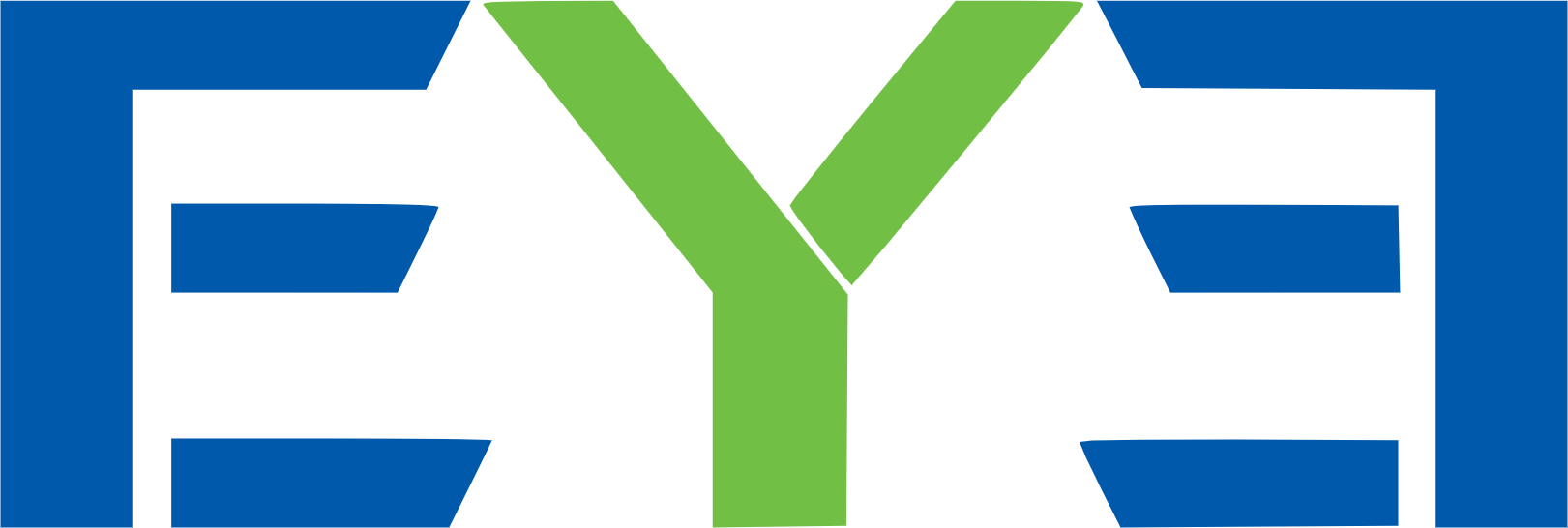HIKVISION(002415)
Search documents
AI人工智能ETF(512930)涨近1%,京东招募端侧AI芯片领域人才
Xin Lang Cai Jing· 2025-12-12 05:33
截至2025年12月12日 13:06,中证人工智能主题指数(930713)上涨0.78%,成分股芯原股份(688521)上涨 5.73%,北京君正(300223)上涨5.26%,德赛西威(002920)上涨4.78%,润泽科技(300442)上涨4.52%,豪 威集团(603501)上涨4.47%。AI人工智能ETF(512930)上涨0.61%,最新价报2.14元。 数据显示,截至2025年11月28日,中证人工智能主题指数(930713)前十大权重股分别为中际旭创 (300308)、新易盛(300502)、寒武纪(688256)、中科曙光(603019)、澜起科技(688008)、科大讯飞 (002230)、海康威视(002415)、豪威集团(603501)、金山办公(688111)、浪潮信息(000977),前十大权重 股合计占比63.92%。 消息面上,京东正招募端侧AI芯片领域人才。京东此次的招聘方向主要集中在存算一体AI芯片领域, 产品或将用于机器人、智能家电等硬件端侧。此外,《山东省人工智能产业高质量发展行动计划 (2025-2027年)》日前印发。其中提出,到2027年,全省人工智能核心产业 ...
研判2025!中国城市道路监控系统行业发展背景、产业链、市场规模及发展趋势分析:智慧城市建设加速,推动城市道路监控系统规模持续扩容[图]
Chan Ye Xin Xi Wang· 2025-12-12 01:08
内容概要:城市道路监控系统是智能交通系统中负责信息采集和基础功能实现的核心子系统,它不仅包 括视频监控,还集成了多种传感器和智能分析技术,实现对道路交通状况的全方位、实时、动态监控。 近年来,随着我国城市化进程的加速和智慧城市建设的全面推进,城市道路监控系统市场规模持续扩 大。数据显示,2015年中国城市道路监控系统行业市场规模达到83亿元,到了2024年行业市场规模增长 至209.4亿元,年复合增长率为10.8%。预计未来中国城市道路监控系统行业市场规模将继续保持增长态 势。一方面,政策扶持与新基建推进构建了良好发展环境,为行业扩张提供明确方向与资金保障,另一 方面技术革新与应用场景拓展持续拓宽行业边界,催生多元需求与增量市场。 相关上市企业:海康威视(002415)、中威电子(300270)、佳都科技(600728)、大华股份 (002236)、苏州科达(603660)、汉邦高科(300449)、萤石网络(688475)等。 相关企业:浙江宇视科技有限公司、深圳市宏天视科技有限公司、北京伊神华虹系统工程技术有限公 司、北京朗观视觉科技有限公司等。 关键词:城市道路监控系统行业产业链、城市道路监控系统行业市 ...
打破吉尼斯纪录的氢动力无人机飞来参展 695项新技术、新产品、新装备让你大饱眼福
Mei Ri Shang Bao· 2025-12-11 23:21
商报讯 (记者 潘婷婷 通讯员 郑婷婷) 昨天,第七届浙江国际智慧交通产业博览会在杭州盛大开幕, 活动将持续到12月13日。 本届博览会打造人享其行"交通+"特色展区,聚焦"跟着交通去旅行"主线,集中展示"泛舟浙里""千年古 港""驾游浙江""环浙骑游""畅行中心""低空旅游"等6大品牌,充分释放交通融合发展带动效应。 开幕式上,多项重磅政策与创新成果集中亮相,省交通运输厅、省科技厅共同发布《交通科技创新合作 协议》,省经信厅发布《浙江省综合交通首台(套)装备推广应用指导目录(2025年版)》。 现场,"四港智运"大模型正式发布成为焦点。据悉,该大模型面向物流垂直领域,覆盖运输全流程、全 链路、全环节,是落实"人工智能+交通运输"行动部署的重要成果,将有效推动AI赋能物流降本增效。 亮相博览会的"天目山一号"氢动力无人机,创造了"氢燃料电池驱动的多旋翼无人机飞行的最长距离"吉 尼斯世界纪录,成功完成了不间断飞行188.605公里(用时4小时17分55秒)的飞行挑战,已应用于高速 巡检、油气管道巡查、新能源电站运维及海岛运输、城市交通管理及应急救援作业。 走进港航物流(航运服务)馆,海港领域首款空箱"绑扎机器人 ...
【省国资委】陕西国企与7家企业签署协议开展数智化建设
Shan Xi Ri Bao· 2025-12-11 22:54
近年来,智能化应用在陕投集团旗下各子公司已全面铺开。陕西能源着力开展企业应用场景创新, 其下属单位赵石畔煤矿通过"5G+AI"多网融合,给矿山装上"智慧大脑",提升安全风险预警响应效率。 陕煤地质运用人工智能技术,提升"地热能+储能"多能互补清洁能源系统能效10%以上。神木氯碱入选 陕西省2025年度先进级智能工厂名单,通过智慧工厂建设,实现生产工艺绿色化、生产过程自动化、管 理手段信息化、经营模式现代化,打造绿色数字氯碱标杆企业。寰宇卫星通过人工智能技术精准高效测 运控航天器408颗,管理卫星237颗。 12月10日,记者从省国资委获悉:日前,陕西投资集团有限公司(以下简称"陕投集团")与陕西移 动、陕西电信、腾讯、华为、阿里云、海康威视、正泰7家数字科技领域头部企业签署了数智化转型、 人工智能战略合作协议。 此次签约标志着陕投集团主动拥抱人工智能革命,全面开启数智化建设工作。 陕投集团相关负责人介绍,下一步,陕投集团将全面实施集团制定的"人工智能+"三场景三促进行 动方案,抢抓人工智能历史发展机遇,加快推动人工智能与集团产业深度融合,培育发展新质生产力。 (记者:沈谦) ...
海康威视以物联感知+AI打造智慧管廊新样本
Zheng Quan Ri Bao· 2025-12-11 11:37
为了让管廊保持健康运转,海康威视部署了六台巡检轨道机。巡检轨道机上搭载的双光云台红外摄像机 分工明确:可见光镜头结合AI算法,能及时发现管廊侧壁、顶板的细微裂缝,以及内部管线的破损和 渗漏。 管廊内的高压线缆接头、电控箱等过电设备,因运行中电流负载大,容易出现局部过热问题,成为火灾 隐患。对此,巡检轨道机配备的红外热成像仪可实时监测这些设备温度,快速锁定温度异常点位并发出 预警,筑牢火灾防控防线。 对于热力舱管线、高压电力电缆这类长距离铺设且容易发热的特殊管线,仅靠轨道巡检机难以实现全段 全时监测。为此,管廊内部署了海康威视光纤测温系统——将光纤敷设在目标管线上,形成"温度监测 线",通过光纤传感技术实时捕捉管线温度变化,弥补轨道机的巡检盲区。 同时,管廊内还部署了海康威视各类环控传感器,实时监测管廊内部的氧气浓度、甲烷浓度和温湿度等 环境量;沉降传感器则专注于管廊本体结构的稳定性,确保地下空间安全。 除了对管廊结构、设备与环境等进行智能监测外,海康威视智慧管廊解决方案还聚焦"人员安全",构建 起包含"作业规范、实时定位、入侵防范"的全方位监测体系。 据悉,管廊内每200米就部署了海康威视高清摄像机及球机,实 ...
计算机行业今日净流出资金69.10亿元,中科曙光等17股净流出资金超亿元
Zheng Quan Shi Bao Wang· 2025-12-11 09:27
沪指12月11日下跌0.70%,申万所属行业中,今日上涨的有1个,涨幅居前的行业为银行,涨幅分别为 0.17%。跌幅居前的行业为综合、通信,跌幅分别为4.31%、3.14%。计算机行业今日下跌1.97%。 资金面上看,两市主力资金全天净流出744.67亿元,主力资金净流入的行业仅有1个,银行行业净流入 资金6748.93万元。 | 代码 | 简称 | 今日涨跌幅(%) | 今日换手率(%) | 主力资金流量(万元) | | --- | --- | --- | --- | --- | | 300520 | 科大国创 | 5.57 | 22.10 | 25271.74 | | 300170 | 汉得信息 | 2.03 | 11.29 | 22287.65 | | 301117 | 佳缘科技 | 7.00 | 33.72 | 12538.52 | | 301638 | 南网数字 | 1.74 | 26.33 | 5363.92 | | 688228 | 开普云 | 2.41 | 3.26 | 5264.96 | | 603516 | 淳中科技 | 0.62 | 3.65 | 4202.23 | | 300659 | ...
摩尔线程市值突破4000亿元,人工智能AIETF(515070)持仓股景嘉微大涨超3%
Mei Ri Jing Ji Xin Wen· 2025-12-11 06:01
国产GPU第一股摩尔线程今日盘中大幅上涨,股价突破800元,总市值超4000亿元。人工智能产业链今 日走势分化,人工智能AIETF(515070)持仓股景嘉微大涨超3%,新易盛、中科新图、协创数据等个 股表现较好。 人工智能AIETF(515070)跟踪CS人工智能主题指数(930713),成分股选取为人工智能提供技术、 基础资源以及应用端个股,聚集人工智能产业链上中游,俗称"机器人"大脑"缔造者",万物互联"地 基"。前十大权重股包括中际旭创、新易盛、寒武纪-U、中科曙光、科大讯飞、豪威集团、海康威视、 澜起科技、金山办公、紫光股份等国内科技龙头。 (文章来源:每日经济新闻) 消息方面,政策端,国家航天局近日设立商业航天司,并推动首颗"太空算力试验卫星"年内发射,旨在 缓解地面数据中心能耗与散热瓶颈,为AI超算提供太空级算力支持。产业端,12月8日,光通信板块掀 涨停潮,CPO、光芯片、光模块指数单日涨幅均超5%,市场认为AI大模型训练与推理对高速数据传输 需求激增,光通信成为突破电传输物理极限的核心方案。 中银证券指出,AI算力需求正从地面向太空延伸,商业航天与光通信形成"空天地一体"算力网络,政策 与技 ...
“地下之城”怎么管?海康威视以物联感知+AI打造智慧管廊新样本
Jin Rong Jie· 2025-12-11 04:15
当地面上的摩天大楼持续向高空攀升时,地下也在进行着一场关乎城市运转的"生长"——地下管廊正像树木根茎一样 悄然蔓延。截至2022年6月,全国已建成综合管廊总长度5902公里(来源:新华社报道),这些地下"生命线工程"将 水、电、气、通信等各类市政管线集于一体,为管线提供了受保护的物理空间,同时也为运维人员创造了一个便捷的 巡检、维修环境,大幅提升城市管线运维效率。 然而,与地上相比,地下意味着更多的未知。管廊内部空间相对幽闭,还需应对管廊结构沉降、管线泄露、有害气体 积聚等复杂挑战,这对地下空间及管线管道的长期稳定以及运维人员的安全都构成了考验。 2025年,海康威视联合太仓市三峡城市综合管廊建设有限公司,为太仓大道地下综合管廊打造了智慧管廊解决方案, 通过部署各类传感器、巡检轨道机等物联感知设备,实时监测管廊结构、环境、设备状态及人员活动;结合"管廊综合 管理平台"实现对管廊的远程管控、智能预警和应急响应,显著提升运维效率和安全保障能力。 01 物联感知设备协同"把脉" 让管廊监测又快、又准、又全 让人员安全"看得见"、"管得住" 除了对管廊结构、设备与环境等进行智能监测外,海康威视智慧管廊解决方案还聚焦" ...
解密主力资金出逃股 连续5日净流出553股





Zheng Quan Shi Bao Wang· 2025-12-10 09:46
Core Insights - A total of 553 stocks in the Shanghai and Shenzhen markets have experienced net outflows of main funds for five consecutive days or more as of December 10 [1] - ST Jinglan has the longest streak of net outflows, with 23 days, followed by Aier Eye Hospital with 22 days [1] - The largest total net outflow amount is from Changcheng Military Industry, which has seen a cumulative outflow of 2.123 billion yuan over 12 days [1] Summary by Category Stocks with Longest Net Outflow Duration - ST Jinglan: 23 days of net outflow [1] - Aier Eye Hospital: 22 days of net outflow [1] - Sairisi: 7 days of net outflow [1] Stocks with Largest Net Outflow Amount - Changcheng Military Industry: 2.123 billion yuan over 12 days [1] - Aier Eye Hospital: 1.706 billion yuan over 22 days [1] - Sairisi: 1.370 billion yuan over 7 days [1] Stocks with Highest Net Outflow Proportion - *ST Zhengping: 26.44% decline over the last 5 days [1] - Aier Eye Hospital: 14.30% decline over 22 days [1] - Sairisi: 11.26% decline over 7 days [1] Additional Notable Stocks - Keda Xunfei: 1.209 billion yuan net outflow over 12 days with a 2.75% decline [1] - Dongfang Precision: 1.171 billion yuan net outflow over 7 days with a 10.92% decline [1] - Huaying Technology: 939 million yuan net outflow over 5 days with a 7.32% decline [1]
海康威视:移动机器人系列包括潜伏、移载、重载、叉取、料箱、复合机器人和智能组件等
Mei Ri Jing Ji Xin Wen· 2025-12-09 16:23
每经AI快讯,有投资者在投资者互动平台提问:公司在机器人领域除了移动机器人,是否有推出人形 机器人? 海康威视(002415.SZ)12月9日在投资者互动平台表示,您好,海康机器人提供全场景智能机器人、系 统平台和解决方案。其中,移动机器人系列包括潜伏、移载、重载、叉取、料箱、复合机器人和智能组 件等,关节机器人系列包括垂直、水平多关节机器人和控制系统、工业软件等,谢谢。 (文章来源:每日经济新闻) ...



